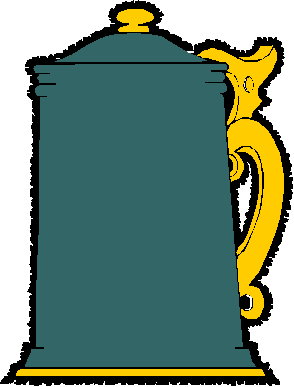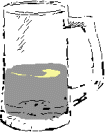

Achel Blonde 8





Review Date 2/22/2021 By John Staradumsky
I owe it all to Willy and Jeff. It was the mid-80s, and I was shopping for beer at Macís Liquors (owned by Jeff) in little old West Warwick, Rhode Island. Way back in the mid-eighties I used to frequent a liquor store called Macís Liquors in tiny West Warwick, Rhode Island. Willy, a crusty old employee at the time with an exterior as gruff as a quahog, called me over and tried to sell me on ďchime" beer. He was hawking a three pack, with one of each variety of Chimay beers in a wooden crate. He made the sale, and for me, a door was opened to the wonderful world of Trappist ales.
My beer enthusiasm continued on into the 90s, and for most of that time there were six true trappist breweries, all spoken of in reverent tones. Along with Chimay, there were four more in Belgium: Westmalle, oldest of them all, Westvleteren, rarest and hardest to find, Rochefort, and Orval. The last, La Trappe, is located in the Netherlands.
There would be more to come. Austriaís Stift Engelszell arrived on the beer scene in 2012, then St. Josephís Abbey in Massachusetts and Zundert in the Netherlands in 2013, Tre Fontane Abbey in Italy in 2015, Cerveza Cardena Trappist in Spain in 2016, Mount St. Bernard in England in 2018, and then Mont Des Cats in France. Rest assured, these dates are not when the monasteries were founded, just when they started selling the beer they make, and for most their brewing traditions go back many years indeed.
And then, of course, there is Achel. Tonight, I am sipping a bottle of Achel Blonde 8, and musing over their unique situation in the world of trappist ales. Trappist ale is an appellation controleť, meaning you canít just call any beer a Trappist beer. Your beer must be brewed in an abbey by trappist monks to qualify.
And that is where things get sticky for Achel. Achel was all the rage in 2001 when they became the 7th official Trappist brewery in 2001. I recall beer geeks going bonkers at the time, and everyone wanted their beer. I never saw it personally until December of 2020 when I snagged a bottle of Achel Blond 8 at Total Wine. In January of 2021, Achel no longer had monks brewing their beer. To add to their woes, Achel's US importer, Shelton Brothers, filed for bankruptcy and went out of business at the end of 2020.
Achel says this about the situation:
Although the last two monks moved from the Abbey of Achel to the Abbey of Westmalle, the brewing activities in the Achelse Kluis are continued. Achel remains a Trappist abbey and the beers that are brewed there continue to bear the registered brand name 'Trappist'. Only the hexagonal ATP label will disappear from the label from 2021 and be replaced by Achel's monastic coat of arms.
The abbot of the Abbey of Westmalle visits the Achelse Kluis every week and supervises the brewing and other activities in the Achelse Kluis. Nothing changes about the trappist Achel's recipes. More than 5,000 hectolitres are brewed in Achel each year. The proceeds of the Trappist Achel will be used for the maintenance and maintenance of the abbey site, solidarity within the Trappist order, development projects and charities.
All this begs an interesting question. If the beer does not change and Westmalle brewing authorities supervise periodically, is it not still a Trappist ale as opposed to an abbey-style ale?
Achel says this about Achel Blond 8:
The nose of this re-fermented tripel shows a very fine hoppiness, combined with sweet-malty and floral notes. In the mouth, the taste delivers on all the promises of the smell: after a sweet start, the flowers and the hops come; after the full taste follows a long aftertaste, in which the bitterness is tempered by velvety malt notes.
Achel Blond 8 has an alcohol content of, you guessed it, 8% by volume. I paid $7.49 for an 11.2 ounce bottle at Total Wine. My bottle is stamped as bottled on 6/28/20 and still bears the authentic Trappist seal.
Achel Blond 8 pours to a hazy blonde color that becomes gently darker as I swirl the last of the beer in the bottle and add to my glass. The nose is soft malt, funky yeast and nuts. Taking a sip the beer is medium to full in body with more of the nutty, funky yeast notes, a hint of banana, perhaps clove and a spicy dry finish. Yeasty funk is the largest part of this one.
This is very tasty indeed, and I am very glad to have had the chance to finally try it. Overall, compared to the classic trappist brews I have enjoyed, and considering the price (I can at times get a 750ML bottle of Chimay at Costco for $8.99), I will peg this one at 4 1.2 stars. Do not let the price deter you, though, you simply must try this beer. I myself will certainly buy it again.
Glad I tried it?
T
Would I rebuy it??
*Pricing data accurate at time of review or latest update. For reference only, based on actual price paid by reviewer.
(B)=Bottled, Canned
(D)=Draft